Ohio owes its nickname to a tree, some possible revisionist history, and a nineteenth-century political campaign. Here is the story of how Ohio came to be known as “The Buckeye State.”
The Ohio Buckeye Tree
The Aesculus glabra, better known as the Ohio Buckeye tree, is native to North America. It is a medium-sized deciduous tree with a maximum height of 50-60 feet and an 18-20 inch diameter. The tree was especially prevalent in Ohio prior to the arrival of European settlers who cleared the land for agriculture and settlements. While the tree does not grow in its historic numbers, it is still prevalent throughout Ohio. It also extends into Pennsylvania, southern Michigan, Indiana, and eastern Illinois. The tree is not drought-tolerant and needs consistent water, so it is often found along river and stream banks and in floodplains.
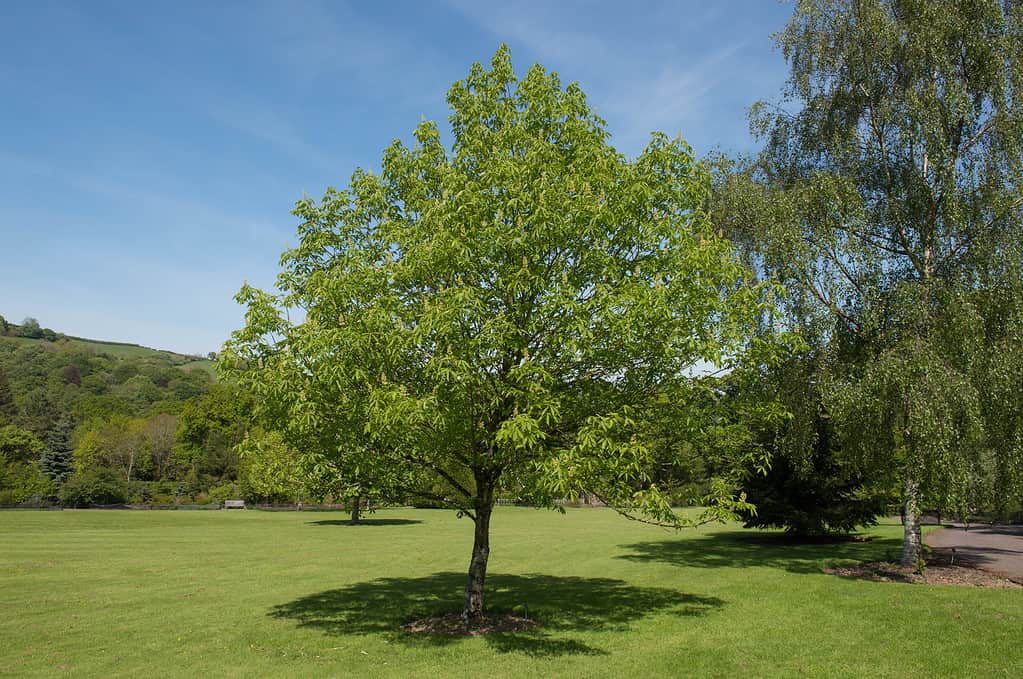
The Ohio Buckeye tree is a medium-sized tree found throughout Ohio.
©Peter Turner Photography/Shutterstock.com
The tree fruits in the late summer or early fall produce nuts (or, more accurately, nut-like seeds) that are dark brown with a lighter spot in the center. It is said that Native Americans referred to the nut as “hetuck,” which means “buck eye” because the nut resembled the shape and color of a deer’s eye.
The Ohio Buckeye became the official state tree of Ohio in 1953. Today, Ohio has five official state plants and ten state animals.
The Origin of the “Buckeye” Nickname (Maybe)
Today, Ohio is known as The Buckeye State, and its residents simply as Buckeyes. How did the name of this seed become attached to people and the state as a whole? As the story goes, the first person to be called a “Buckeye” was Colonel Ebenezer Sproat.
Sproat was a Revolutionary War veteran. After the war, he moved to Rhode Island and opened a tavern. When the business failed, he became a surveyor. Sproat was part of the team that surveyed the Northwest Territory. He then became one of the first settlers of Marietta, Ohio. Marietta was the first permanent U.S. settlement west of the Ohio River and is Ohio’s oldest city.
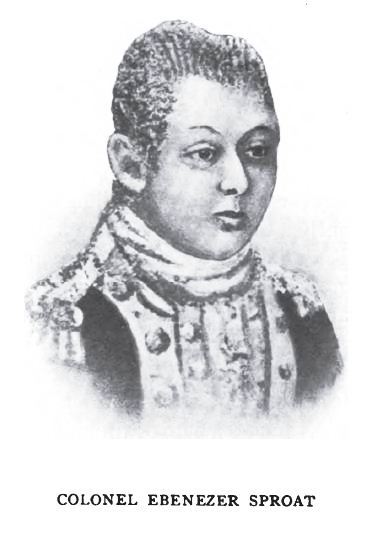
Colonel Ebenezer Sproat’s portrait.
©Thomas Weston: History of the Town of Middleboro, Massachusetts/ Public domain – Original / License
Sproat was a large man, standing 6’4” tall with a generous girth. Legend says when the Native Americans in the Marietta region saw Sproat at a ceremony in 1788, they shouted, “Hetuck! Hetuck!” because they were impressed by his stature and mannerisms.
Problems With This Origin Story
Samuel Prescott Hildreth recorded this story of Sproat in 1852. It has been shared and accepted as a fact ever since. However, historians have recently begun to question its veracity.
Historian Raymond Irwin found several problems with Hildreth’s account.
- There is no other account of the ceremony involving Sproat that mentions native people shouting, “Hetuck!”
- According to Irwin, the word itself may have been fabricated. “Hetuck” does not appear to have been part of any native people’s language, referring to the eye of a deer.
- No other documentation in Ohio history prior to 1852 mentions the Sproat/Buckeye connection, including Hildreth’s earlier work.
Why Invent This Story?
If the story is bogus, the question then turns to why. Why would Hildreth add this false story to his telling of the ceremony involving Sproat? Irwin offers a few possibilities.
First of all, the Buckeye tree was considered useless by white settlers. Irwin notes, “The meaning of the word ‘Buckeye’ originally was ‘fake’ or ‘useless.’ So, you could be called a ‘Buckeye lawyer,’ or a ‘Buckeye doctor,’ or a ‘Buckeye Christian,’ which just means false or fake.”
The name later began to apply to people born on the frontier, including Ohio. Irwin posits that maybe Hildreth was trying to put a positive spin on the nickname since it included what had been a negative word up to that point.

The nut-like seeds of the Ohio Buckeye tree are said to resemble a buck’s eyes.
©e.backlund/Shutterstock.com
Irwin also notes that Hildreth’s story may have been an attempt to whitewash the relationship between white settlers and native peoples in Ohio. The commonly-held story suggests that the native peoples who celebrated the arrival of Sproat had a friendly relationship with the settlers. The reality was quite different. Native peoples were forcibly removed from Ohio. The last native group, the Wyandot, was removed by 1852.
This origin story of Ohio’s nickname has only recently been called into question. Many still hold to its truthfulness. The Ohio State University uses the story to explain why its athletic teams are known as the Buckeyes.
We may never know for sure whether the Sproat story is true, in whole or even in part. However, there is a later episode that is verifiable. It sheds light on the further expansion of the “Buckeye” nickname.
William Henry Harrison
In 1833, Dr. Daniel Drake gave a speech in Cincinnati where he referred to himself and his fellow Ohioans as “Buckeyes.” That may have greased the wheels for the tree’s use in the 1840 presidential campaign when the Whig candidate, William Henry Harrison, squared off against the incumbent, Democrat Martin Van Buren.
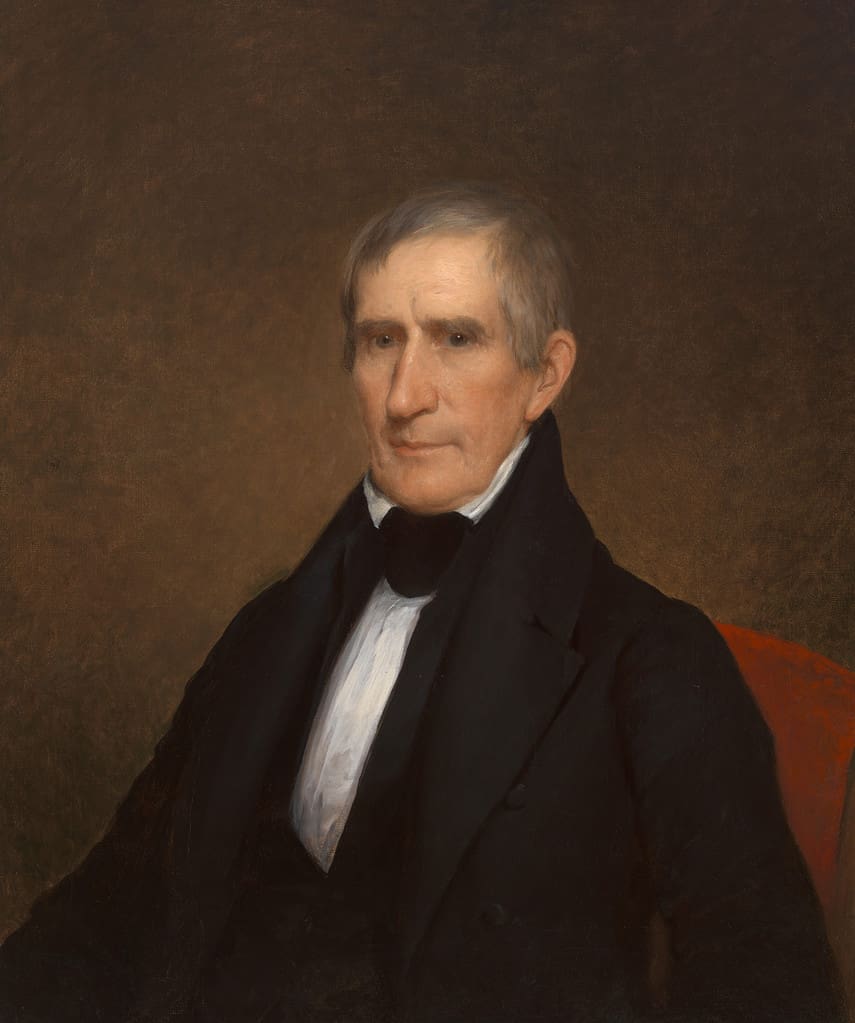
William Henry Harrison’s presidential campaign solidified Ohio’s connection with the Ohio Buckeye tree.
Harrison’s Military Service
Harrison was born in Virginia in 1773. He was the last U.S. president to be born as a British subject. His father was a governor of Virginia and a signer of the Declaration of Independence. Harrison was born in Virginia, but his life is much more connected with Ohio.
Harrison joined the U.S. Army in 1791 and fought against various Indian tribes. He was appointed commander of Fort Washington, near modern-day Cincinnati, in 1796. Harrison’s military campaigns paved the way for settlers to enter the region. Ohio would become the seventeenth U.S. state on February 19, 1803.
Harrison’s most famous battle was probably the Battle of Tippecanoe in 1811. He led U.S. forces against the troops of the famed Shawnee leader, Tecumseh. That Indiana battle gave rise to Harrison’s nickname, “Tippecanoe.” It would also become a winning political slogan of Harrison and his running mate, John Tyler: “Tippecanoe and Tyler, too.”
The Buckeye In Harrison’s Presidential Campaign
Though Harrison was born in Virginia, he was a well-known Ohio resident when he ran for president as the Whig Party candidate in 1840. An opposition newspaper commented that Harrison “was better fitted to sit in a log cabin and drink hard cider than rule in the White House.” Harrison, being a savvy politician, embraced the criticism and turned it into a mainstay of his campaign.
Harrison painted himself as a “man of the people” while he portrayed Van Buren as a wealthy elitist. Some may consider this a bit of gaslighting since Van Buren grew up on a farm in rural New York while Harrison was born into a wealthy, influential family. Nevertheless, it proved to be a highly effective political tactic.
Harrison’s campaign staff fashioned an emblem of a log cabin made of Buckeye timbers with the tree’s nuts strung along the walls. Harrison’s supporters marched with Buckeye walking sticks in parades while rolling whiskey barrels along the route. They also carved campaign souvenirs out of Buckeye wood.
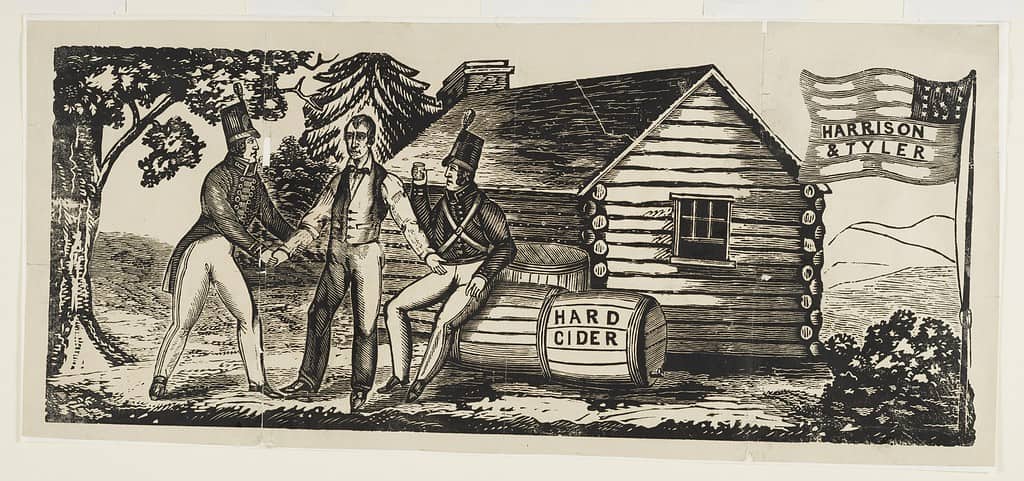
The Harrison campaign embraced the log cabin imagery, turning it into their official campaign emblem.
©American 18th and 19th century cartoons / Public domain – Original / License
Winning the 1840 Presidential Election
The campaign proved highly effective. Harrison had previously lost to Van Burn in the 1836 presidential election. Four years later, Harrison soundly defeated Van Buren, winning the electoral vote by a margin of 234-60 and approximately 53 percent of the popular vote.
At 68 years old, Harrison was the oldest person ever elected president and would continue to hold that record until Ronald Reagan was inaugurated in 1981. Harrison’s presidency is the shortest in American history. He died a mere four weeks after taking the oath of office.
There is a statue of William Henry Harrison mounted on a horse in Cincinnati today. His body is buried in North Bend, Ohio, roughly 13 miles northwest of downtown Cincinnati.

William Henry Harrison’s tomb is located in North Bend, Ohio.
©Zack Frank/Shutterstock.com
Harrison proudly embraced the Buckeye as a symbol of his Ohio home. The use of the Ohio Buckeye tree in the Harrison campaign further connected the tree and its fruit with the state. It undoubtedly helped cement Ohio’s nickname as “The Buckeye State.”
Harrison was the first of eight presidents from Ohio, earning the state another lesser-used nickname: “Mother of Presidents.” Some claim that seven is the more accurate number, though, since Harrison was born in Virginia.
Modern Uses of “Buckeye”
Today, the Buckeye is practically synonymous with Ohio.
The Ohio State University
As noted above, the athletic teams from The Ohio State University are known as the Buckeyes. The school’s mascot, Brutus, features a large Buckeye head. Decals featuring the leaves of the Ohio Buckeye tree are applied to the football helmet of players as recognition of playmaking and overall consistency. It extends beyond athletics, though. All students and alumni of the school refer to themselves as Buckeyes. This reflects the state as a whole. The name is also generally applied to all Ohioans.
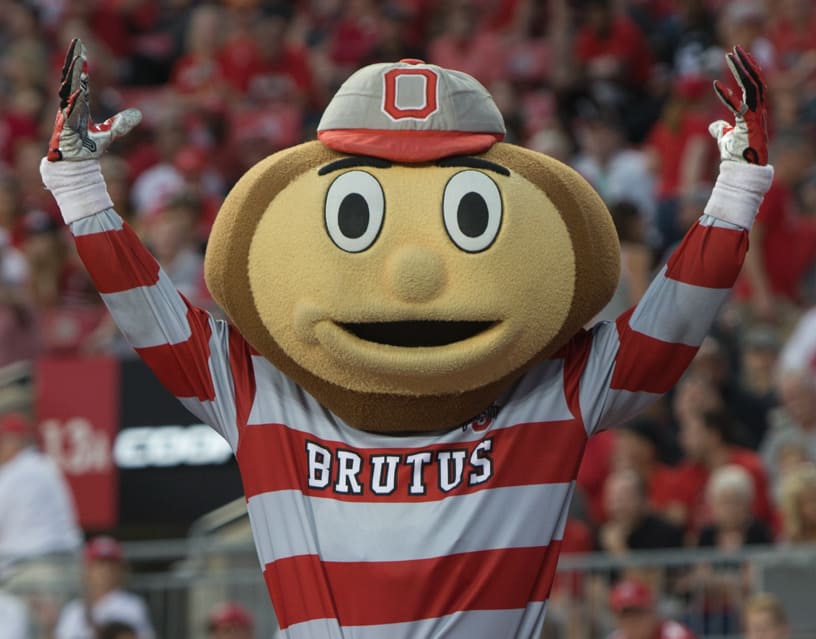
Brutus, the Ohio State mascot, features a large Buckeye head.
©Michelle Eberhart, United States Army / Public domain – Original / License
Towns and Trails
Multiple towns in Ohio bear the Buckeye name, including the community of Buckeye in Jackson County and the two towns known as Buckeye Lake, one in Fairfield County and one in Licking County. There is also the Buckeye Trail, a 1,444-mile hiking trail that loops around the entire state. A large number of businesses throughout the state have adopted “Buckeye” as part of their names.
The Dessert
There is also the unofficial dessert of Ohio known as “buckeyes.” It consists of peanut butter fudge balls that are partially dipped in chocolate. The dark brown chocolate covers much of the fudge ball, but a circle of the underlying peanut butter is left uncovered at the top. The end result looks very much like the nut of the Ohio Buckeye tree.
The dessert was purportedly invented by an Ohio candymaker named Gail Tabor. She discovered the visual similarities between the dessert and the fruit of the Ohio Buckeye tree, so she began bringing the dessert to the annual Ohio State-Michigan football game (often known simply as “The Game”). Fans loved the confection and word spread. Even though Tabor wanted to keep the recipe a secret, she could not, and the dessert became synonymous with Ohio.
While the dessert is delicious, the nut it is patterned after is poisonous. Actually, all parts of the Ohio Buckeye tree are toxic if ingested. If the inside of the nut-like seeds are roasted to remove the tannic acid, they are edible. However, experienced roasters should only attempt this to ensure the toxic acid is completely removed.

Chocolate and Peanut Butter Buckeye Candies
©Kevin B. Photography/Shutterstock.com
The Buckeye State
The story of Ohio’s “Buckeye State” nickname is long and varied. Parts of the story are most certainly true. Other portions of the story are questionable, but the strong connection between the state and the Ohio Buckeye tree is beyond question.
Thank you for reading! Have some feedback for us? Contact the AZ Animals editorial team.








